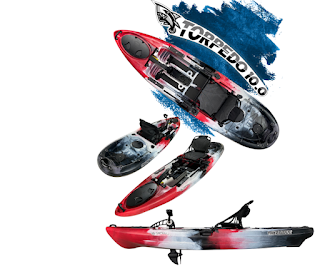Marine Pollution
Marine contamination is a developing issue in this day and age. Our sea is being overflowed with two primary kinds of contamination: synthetics and garbage.
Substance tainting, or supplement contamination, is unsettling for wellbeing, ecological, and monetary reasons. This sort of contamination happens when human exercises, eminently the utilization of compost on ranches, lead to the overflow of synthetic compounds into streams that at last stream into the sea. The expanded convergence of synthetic compounds, like nitrogen and phosphorus, in the waterfront sea advances the development of algal sprouts, which can be poisonous to untamed life and hurtful to people. The adverse consequences on wellbeing and the climate brought about by algal sprouts hurt neighborhood fishing and the travel industry ventures.
Marine equipment or rubbish envelopes are all made items the greater part of them plastic-that end up in the sea. Littering, storm winds, and helpless waste administration all add to the collection of this garbage, 80% of which comes from sources ashore. Normal sorts of marine garbage incorporate different plastic things like shopping sacks and refreshment bottles, alongside cigarette butts, bottle covers, food coverings, and fishing gear. Plastic waste is especially tricky as a poison since it is so enduring. Plastic things can require many years to break down.
Answers for marine contamination incorporate counteraction and cleanup. Dispensable and single-utilized plastic is richly utilized in the present society, from shopping sacks to delivery bundling to plastic jugs. Changing society's way to deal with plastic use will be a long and monetarily testing process. Cleanup, conversely, might be unimaginable for certain things. Many kinds of trash (counting a few plastics) don't drift, so they are lost somewhere down in the sea. Plastics that really do drift will generally gather in huge "patches" in sea gyres. The Pacific Garbage Patch is one illustration of such an assortment, with plastics and microplastics drifting on and underneath the outer layer of twirling sea flows among California and Hawaii in a space of around 1.6 million square kilometers (617,763 square miles), in spite of the fact that its size isn't fixed. These patches are less similar to islands of garbage and, as the National Oceanic and Atmospheric Administration says, more like bits of microplastic pepper twirling around a sea soup. Indeed, even a few promising arrangements are insufficient for battling marine contamination. Supposed "biodegradable" plastics regularly separate just a
Source: Mazuzee.com
Reasons for Ocean Pollution
There are many reasons for sea contamination. Of the relative multitude of realities, there is one steady: most contamination in our seas starts ashore and is brought about by people. Here is a portion of the significant reasons for marine contamination:
Nonpoint source contamination (Runoff)
Nonpoint source contamination comes from a wide range of areas and sources. The consequence of this is spillover, which happens when downpours or snow moves contaminations starting from the earliest stage of the sea. For example, after a weighty rainstorm, water streams go 4x4 romping into the sea, taking oil left on roads from vehicles with it.
Purposeful release
Producing plants in a certain region of the world deliver harmful material into the sea, including mercury. While it's purposefully being delivered into the ocean, sewage likewise adds to sea contamination, just as plastic items. As indicated by Ocean Conservancy, 8,000,000 metric huge loads of plastic goes into our seas consistently.
Oil slicks
Ships are significant supporters of sea contamination, particularly when unrefined petroleum spills happen. Raw petroleum goes on for quite a long time in the sea and is hard to tidy up.
Littering
Barometric contamination, which alludes to objects conveyed by the breeze to the sea, is a major issue. Things, for example, plastic packs and styrofoam compartments become suspended in the water and don't deteriorate.
Sea mining
Remote ocean sea mining causes contamination and interruption at the least levels of the sea. Boring for substances, for example, cobalt, zinc, silver, gold, and copper makes destructive sulfide stores somewhere down in the sea.
Impacts of Ocean Pollution
Sea contamination has numerous outcomes that straightforwardly and in a roundabout way influence marine life, just as people. Here are probably the most well-known impacts of sea contamination:
Hurtful to marine creatures
Ocean creatures are normal casualties of sea contamination. Oil slicks, for example, will entrap and choke out marine creatures by pervading their gills. At the point when the oil gets into seabird feathers, they will most likely be unable to fly or take care of their young. Creatures that aren't killed by raw petroleum might experience the ill effects of malignant growth, social changes and become unfit to imitate.
Marine creatures additionally botch little plastic flotsam and jetsam for food or become snared in or choked by plastic sacks and disposed of fishing nets. Creatures generally defenseless against hurt from plastic trash in the sea incorporate dolphins, fish, sharks, turtles, seabirds, and crabs.


Comments
Post a Comment